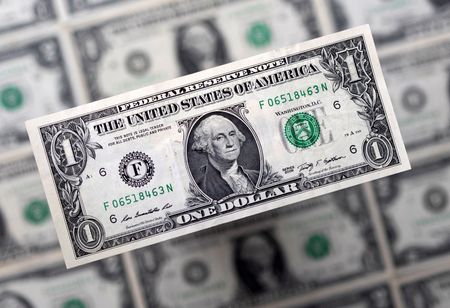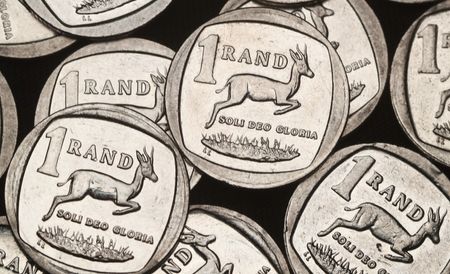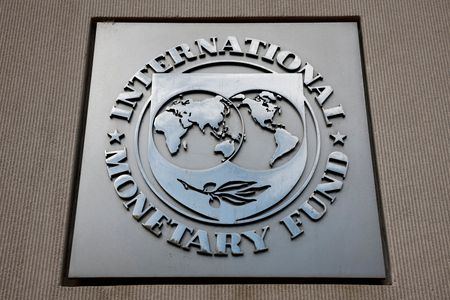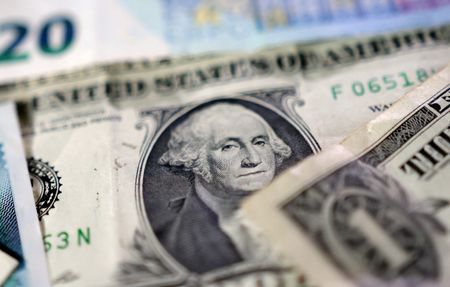By Kevin Buckland
TOKYO (Reuters) – The U.S. dollar steadied on Wednesday following its biggest decline in more than three weeks overnight, with cooler-than-expected U.S. consumer inflation data bolstering the case for Federal Reserve easing just as global trade tensions cool.
The Labor Department said the consumer price index increased 0.2% last month, below expectations of economists polled by Reuters for a 0.3% gain, after dipping 0.1% in March.
At the same time, inflation is likely to pick up in the coming months as U.S. tariffs lift the cost of imported goods, although the outlook for U.S. trade has improved following an agreement with Britain last week and weekend talks with China that yielded a 90-day truce in their tit-for-tat tariff war.
U.S. President Donald Trump said in a Fox News interview that he could see himself dealing directly with Chinese President Xi Jinping on the final details of a trade deal, adding: “I’m not sure it’ll be necessary.”
Trump said earlier this month that he had “potential deals” with India, Japan and South Korea.
The U.S. dollar index, which measures the currency against six major peers, edged down 0.1% to 100.87 as of 0509 GMT, following a 0.8% slide on Tuesday.
The index had jumped 1% on Monday and touched a one-month peak on optimism that a de-escalation in U.S.-China trade tensions would avert a potential global recession.
“We have been flagging a tactical bounce-back in the USD, which has (now) played out,” TD Securities strategists wrote in a research note.
“Beyond the modest Q2 USD bounce, we see another 5% move lower in the USD in H2 as global investors think about diversifying away from U.S. assets given continued uncertainty and volatility” surrounding U.S. policy, they said.
“Accordingly, USD rallies in Q2 should be opportunities
to sell.”
The dollar gained 0.24% to 7.2122 yuan in offshore trading, after dipping to a six-month trough at 7.1791 yuan on Tuesday.
However, the U.S. currency dropped 0.41% to 146.89 yen, extending Tuesday’s 0.66% slide. It had jumped 2.14% on Monday, the most since March 2020.
The dollar slipped 0.1% to 0.8384 Swiss franc.
The euro and sterling were little changed at $1.1191 and $1.3307, respectively.
The dollar index remains some 3% below its level on April 2, when Trump announced his “Liberation Day” tariffs, triggering a flight by overseas investors from U.S. stocks and bonds.
“We consider there is more upside to the USD in the near term as market participants reassess the outlook for the U.S. and global economies following the temporary U.S.‑China trade deal,” Commonwealth Bank of Australia analysts wrote in a client note, predicting a 2-3% rise in the dollar index over “the next few weeks.”
However, “we do not expect a full recovery in the USD back to levels traded at the start of the year,” when the dollar index was around 108.50, the analysts said.
“Erratic policy making in the U.S. has probably caused some permanent damage to the USD’s status as a safe-haven currency.”
Global asset managers held their biggest underweight position in the dollar in 19 years in May, Bank of America’s global fund manager survey (FMS) showed on Tuesday.
More clarity over Trump’s often erratic trade edicts would potentially pave the way for the Fed to resume interest rate cuts.
The U.S. central bank has adopted a wait-and-see stance as it gauges the economic fallout from the U.S. tariff campaign.
Traders currently price in about 50 basis points of rate reductions between now and the end of the year, according to LSEG data, with the next quarter-point cut seen in September.
(Reporting by Kevin Buckland; Editing by Sonali Paul and Kate Mayberry)








